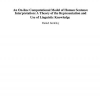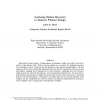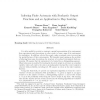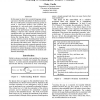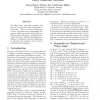118
Voted
AAAI
1992
15 years 2 months ago
1992
The goal in automatic programming is to get a computer to perform a task by telling it what needs to be done, rather than by explicitly programming it. This paper considers the ta...
77
Voted
AAAI
1992
15 years 2 months ago
1992
AAAI
1992
15 years 2 months ago
1992
We describe an approach to training a statistical parser from a bracketed corpus, and demonstrate its use in a software testing application that translates English speci cations i...
106
Voted
AAAI
1992
15 years 2 months ago
1992
Plans fail for many reasons. During planner development, failure can often be traced to actions of the planner itself. Failure recovery analysis is a procedure for analyzing execu...
AAAI
1992
15 years 2 months ago
1992
The family of terminological representation systems has its roots in the representation system kl-one. Since the development of kl-one more than a dozen similar representation sys...
59
Voted
AAAI
1992
15 years 2 months ago
1992
88
Voted
AAAI
1992
15 years 2 months ago
1992
In this paper, we examine how the complexity of domain-independent planning with strips-style operators depends on the nature of the planning operators. We show how the time compl...
106
click to vote
AAAI
1992
15 years 2 months ago
1992
It is often useful for a robot to construct a spatial representation of its environment from experiments and observations, in other words, to learn a map of its environment by exp...
102
Voted
AAAI
1992
15 years 2 months ago
1992
In this paper we show how a natural language system can learn to find the antecedents of relative pronouns. We use a well-known conceptual clustering system to create a case-based...
AAAI
1992
15 years 2 months ago
1992
We define fuzzy constraint networks and prove a theorem about their relationship to fuzzy logic. Then we introduce Khayyam, a fuzzy constraint-based programming language in which ...

